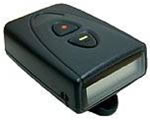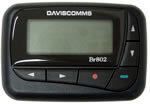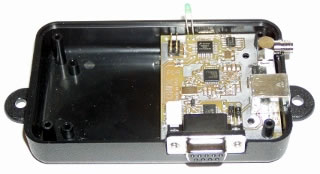BloostonLaw Telecom Update Published by the Law Offices of Blooston, Mordkofsky, Dickens, Duffy & Prendergast, LLP [Portions reproduced here with the firm's permission.] www.bloostonlaw.com |
| Vol. 13, No. 14 | April 7, 2010 |
 FCC’s April 21 Meeting The following items are tentatively scheduled for consideration at the FCC’s April 21 open meeting: USF Reform NPRM and NOI: A Notice of Proposed Rulemaking (NPRM) that proposes reforms to the existing high-cost support mechanisms to identify funds that can be refocused toward broadband, and a Notice of Inquiry (NOI) that seeks comment on the use of a model to determine efficient and targeted support levels for broadband deployment in high-cost areas. Mobile Roaming Order and FNPRM: An Order implementing rules to ensure the availability of reasonable automatic roaming arrangements for voice service and an FNPRM seeking comment on roaming arrangements for mobile broadband services. Network Gateway NOI: An NOI seeking comment on best approaches to assure the commercial availability of smart video devices and other equipment used to access the services of multi-channel video programming distributors. CableCARD NPRM: An NPRM that proposes changes to the CableCARD rules for set-top boxes used with cable services, to improve the operation of that framework pending the development of a successor framework. Survivability NOI: An NOI seeking comment on the present state of survivability in broadband networks and potential measures to reduce vulnerability to network failures. Cybersecurity Certification NOI: An NOI seeking comment on whether the Commission should establish a voluntary program under which participating communications service providers would be certified by the FCC or a third party for adherence to cyber-security objectives and/or practices. |
 INSIDE THIS ISSUE - Court deals blow to FCC on net neutrality.
- FCC sets schedule for 2010 annual access tariff filings.
- NBP proposes opening up 300 MHz of spectrum within next 5 years.
- FCC sets comment dates for extending jurisdictional separations freeze for one year.
- FCC seeks comment on revising performance requirements for 2.3 GHz WCS band.
|
Court Deals Blow To FCC On “Net Neutrality,” Broadband The U.S. Court of Appeals for the District of Columbia Circuit has dealt the FCC a blow on “net neutrality”—the agency’s policy of maintaining an open Internet—as well as undermining its authority to regulate broadband service providers just as the Commission is unveiling its National Broadband Plan. In Comcast v. FCC, the D.C. Circuit, in a 3-0 decision, ruled that the FCC lacked authority to require Comcast to treat all Internet traffic equally on its network. The case dates back to 2007, when several subscribers to Comcast’s high-speed Internet service discovered that Comcast was interfering with their use of peer-to-peer networking applications. These programs allow users to share large files directly with one another without going through a central server, and also consume significant amounts of bandwidth. Public interest groups filed a complaint; Comcast responded that it needed to manage scarce network capacity. The FCC eventually ruled that Comcast’s method of bandwidth management contravened federal policy, and ordered the company to make a set of disclosures regarding a new approach toward managing its network. Comcast complied with the FCC order, but petitioned for review, primarily on the ground that the Commission had failed to justify exercising jurisdiction over its network management practices. The D.C. Circuit agreed. Essentially, the Court said the FCC was stretching its Communications Act Title I ancillary authority into Title II regulation. The decision came only two days before the comment deadline in the FCC’s “net neutrality” rulemaking proceeding. In its opinion, the Court said that the FCC maintains that congressional policy by itself creates “statutorily mandated responsibilities” sufficient to support the exercise of its “ancillary” authority. Not only is this argument flatly inconsistent with several previous cases, the Court said, but if accepted it would virtually free the Commission from its congressional tether. As the Court has previously explained, “without reference to the provisions of the [Communications] Act” expressly granting regulatory authority, “the Commission’s [ancillary] jurisdiction…would be unbounded.” “Indeed,” the Court said, “as Commission counsel told us at oral argument that just as the Order seeks to make Comcast’s Internet service more ‘rapid’ and ‘efficient,’ the Commission could some day subject Comcast’s Internet service to pervasive rate regulation to ensure that the company provides the service at ‘reasonable charges.’ Were we to accept that theory of ancillary authority, we see no reason why the Commission would have to stop there, for we can think of few examples of regulations that apply to Title II common carrier services, Title III broadcast service, or Title VI cable services that the Commission, relying on the broad policies articulated in section 230(b) and section I, would be unable to impose upon Internet service providers.” In conclusion, the Court said that notwithstanding the “difficult regulatory problem of rapid technological change” posed by the communications industry, “the allowance of wide latitude in the exercise of delegated powers is not the equivalent of untrammeled freedom to regulate activities over which the statute fails to confer…Commission authority.” Because the Commission has failed to tie its assertion of ancillary authority over Comcast’s Internet service to any “statutory mandated responsibility,” the D.C. Circuit granted Comcast’s petition for review and vacated the FCC’s order. The FCC, as an agency, issued a statement which, in part, said that the “court decision invalidated the prior Commission’s approach to preserving an open Internet. But the Court in no way disagreed with the importance of preserving a free and open Internet; nor did it close the door to other methods for achieving this important end.” Chairman Julius Genachowski had not issued his own separate statement at our deadline. However, Commissioner Michael Copps said: “My criticism…is not of the Court, but of my own FCC for the bad policy choices it has made. It is time that we stop doing the ‘ancillary authority’ dance and instead rely on the statute Congress gave us to stand on solid legal ground in safeguarding the benefits of the Internet for American consumers. We should straighten this broadband classification mess out before the first day of summer.” Commissioner Mignon Clyburn said: “The Court of Appeals has made clear that, in its view, the Commission does not have the authority to enforce its prior framework designed to preserve an open Internet. The Court’s decision, however, does not change the importance of our goal nor should it weaken our resolve.” Commissioner Robert McDowell said: “I am pleased that today’s court order makes clear that Title I of the Communications Act provides the FCC with no authority to regulate the network management practices of an Internet service provider. I hope this decision will provide certainty in the marketplace and will not lead to the unnecessary classification of broadband service as a monopoly phone service under Title II of the Act.” Commissioner Meredith A. Baker said: “With regard to the substantive policy at issue in this case—net neutrality—I would oppose calls to use the court’s decision as a pretext to reclassify broadband Internet access services under monopoly-era Title II regulation.” BloostonLaw contacts: Hal Mordkofsky, Ben Dickens, Gerry Duffy, and John Prendergast. FCC Sets Schedule For 2010 Annual Access Tariff Filings The FCC has established the procedures and deadlines for incumbent local exchange carriers (ILECs) to file their 2010 access tariff revisions. Whereas price cap ILECs must file interstate access tariff revisions every year, rate of return ILECs need file such revisions only every other year. In addition, rate of return ILECs that file their own traffic-sensitive interstate access tariffs under Section 61.38 of the Commission’s rules are required to file in even-numbered years. Those filing pursuant to Section 61.39 of the Commission’s rules are required to file in odd-numbered years and are not required to submit supporting material with the revised tariff. Because 2010 is an even-numbered year, only the price cap ILECs and the ILECs filing pursuant to section 61.38 are required to file revised access tariffs this year. Any rate-of-return ILEC subject to section 61.39 may elect to make a voluntary tariff filing at this time. ILECs are permitted to make their tariff filings on either 15 or seven days prior to the effective date of their tariffs, depending on the type of changes the tariffs propose. ILECs proposing to increase any of their rates file their tariff revisions on 15 days’ notice, while ILECs proposing to de crease all of their rates file their tariff revisions on seven days’ notice. The Commission’s rules require that annual access tariff filings must be filed with a scheduled effective date of July 1, 2010. (Refer to WCB/Pricing File No. 10-03) ILECs filing tariffs on 15 days’ notice must make their annual tariff filings on June 16, 2010, and ILECs filing tariffs on seven days’ notice must make their annual tariff filings on June 24, 2010. In accordance with the tariff filing schedule, petitions to suspend or reject tariff filings made on 15 days’ notice will be due June 22, 2010 and replies will be due June 25, 2010. Petitions to suspend or reject tariff filings made on seven days’ notice will be due by 12:00 p.m. (noon) Eastern Time on June 28, 2010, and reply comments will be due no later than 12:00 p.m. (noon) Eastern Time on June 29, 2010. Price cap ILECs are required to submit both a short-form Tariff Review Plan (TRP) and a long-form TRP. Section 61.49(k) of the Commission’s rules requires price cap carriers to file a short-form TRP without rate detail information 90 days prior to the usual effective date of July 1. For this year’s filing, the FCC waives the 90-day requirement and permits the short-form TRP to be filed on May 17, 2010. The FCC will issue a separate order that will provide the details of the price cap short form and regular TRPs. Comments on the short form TRP will be due on May 27, 2010. Reply comments will be due June 3, 2010. (Contact the firm with regard to material required to be filed in support of the access charge filings.) BloostonLaw contacts: Ben Dickens, Gerry Duffy, and Mary Sisak. NBP Proposes Opening Up 300 MHz Of Mobile Spectrum Within Next Five Years As part of our continuing coverage of the FCC’s National Broadband Plan (NBP), we review the Broadband Task Force’s recommendation that the FCC should make 300 megahertz between 225 MHz and 3.7 GHz should be made newly available for mobile use within five years. This is part of the Task Force’s larger plan to make a total of 500 megahertz of spectrum available for broadband use within the next 10 years. Five recommendations of the Task Force with respect to wireless spectrum are summarized below. In the bands below 3.7 GHz, the Task Force identifies 547 megahertz as flexible use spectrum that can be used for mobile broadband. This includes the Cellular and PCS bands (totaling 170 megahertz) which are the most intensively used spectrum today. Most of the remaining 377 megahertz was auctioned or rebanded within the past six years and is just now coming online for mobile broadband deployment. This includes 70 megahertz of commercial spectrum in the 700 MHz band (from Auction 73 and earlier Auctions 44 and 49), 90 megahertz of AWS-1 spectrum (from Auction No. 66) and 194 MHz of Broadband Radio Service (BRS) and Educational Broadband Service (EBS) spectrum in the 2500-2690 MHz Band. The Task Force views these already-licensed bands as a "runway" for the launch of next-generation mobile broadband services. Aside from these existing services, which may provide opportunities for our clients who wish to provide wireless broadband services, the Task Force has made the following recommendations as to spectrum bands that should be prioritized for reallocation and rule changes. Clients that are interested in future opportunities to obtain wireless spectrum should take note of the projected timetables for upcoming auctions and participate in related rulemaking proceedings to ensure that there are sufficient opportunities for small businesses and rural telephone companies. Recommendation 1: The FCC should make 20 megahertz available for mobile broadband use in the 2.3 GHz Wireless Communications Service (WCS) band, while protecting neighboring federal, non-federal Aeronautical Mobile Telemetry (AMT) and satellite radio operations. The FCC established and auctioned the 2.3 GHz WCS spectrum in 1997. At that time, the FCC adopted strict operating parameters to protect operations in the adjacent Satellite Digital Audio Radio (SDARS) band. In particular, strict out-of-band emission limits precluded the provision of mobile broadband services in the WCS spectrum. Based on the record developed in WT Docket No. 07-293, the Task Force recommends that the FCC should revise its WCS technical rules to enable mobile broadband use of the 2.3 GHz WCS spectrum, while protecting federal, non-federal AMT and satellite radio operations in the neighboring SDARS band. Recommendation 2: The FCC should auction the 10 megahertz Upper 700 MHz D Block for commercial use that is technically compatible with public safety broadband services. (See BloostonLaw Telecom Update, March 31.) The Task Force has recommended that the FCC auction the Upper 700 MHz D Block for commercial use with limited technical requirements that would ensure technical compatibility between the D Block and the adjacent public safety broadband spectrum block. This would enable, but not obligate, the licensee to enter into a spectrum-sharing partnership with the neighboring Public Safety Broadband Licensee (PSBL). It would also support the public safety broadband capability through equipment development, roaming and priority access, pursuant to the recommendations described in Chapter 16 of the NBP. The D Block consists of 10 megahertz (2x5 megahertz) that did not receive a winning bid in Auction No. 73. The original rules required the D Block licensee to enter into a public-private partnership with the PSBL to build a public safety broadband network. The absence of meaningful bids indicated that the public safety obligations as designed were not commercially viable. The approach recommended by the Task Force would allow for a voluntary partnership between public safety broadband spectrum holders and other commercial licensee(s) (i.e., not only the D Block). The Task Force recommends that the D Block be auctioned with the following rules: The D Block licensee(s) must use a nationally standardized air interface. The NBP does not mandate that the LTE family of standards be used, but it recognizes the public safety community’s unanimous endorsement of LTE. The FCC should initiate a proceeding to enable authorized state, local and federal public safety users to have roaming and priority access rights for broadband service on commercial networks subject to compensation. D Block licensee(s) must develop and offer devices that operate both on the D Block and the neighboring public safety broadband block, with a path toward scale production of components and devices that can utilize both blocks, in order to stimulate the public safety broadband equipment “ecosystem.” The D Block license should be subject to commercially reasonable buildout requirements. The Commission should also consider the use of incentives to promote additional deployment by the D Block licensee(s) for the benefit of rural citizens and for public safety agencies. Recommendation 3: The FCC should make up to 60 megahertz available by auctioning Advanced Wireless Services (AWS) bands, including, if possible, 20 megahertz from federal allocations. (See BloostonLaw Telecom Update, March 31.) The Task Force urges the FCC to move expeditiously to resolve the future of the spectrum already allocated for AWS. The AWS-2 and AWS-3 allocations consist of the AWS-2 “H” Block (10 megahertz at 1915–1920 MHz paired with 1995–2000 MHz; the AWS-2 “J” Block 910 megahertz at 2020–2025 MHz paired with 2175–2180 MHz) and the AWS-3 Band (20 megahertz unpaired at 2155–2175 MHz). The FCC proposed rules for AWS-2 spectrum in 2004 and sought comment on AWS-3 spectrum in 2007. Potential synergies exist between the AWS-3 band and spectrum currently allocated to federal use at 1.7 GHz. There are a number of countries that have allocated spectrum in the 1710–1780 MHz band for commercial use and devices already exist in the international market for that spectrum. Consequently, pairing the AWS-3 band with spectrum from the 1755–1780 MHz band has the potential to bring benefits of a global equipment ecosystem to this band. Recommendation 4: The FCC should accelerate terrestrial deployment in 90 megahertz of Mobile Satellite Spectrum (MSS). MSS is a radio communication service involving transmission between mobile earth stations and one or more space stations. MSS can provide mobile communications, from a handheld device such as a smartphone, in areas where it is difficult or impossible to provide coverage using terrestrial base stations, such as in remote or rural areas and non-coastal maritime regions, and at times when coverage may be unavailable from terrestrial-based networks, such as during hurricanes and other natural disasters. The FCC first allocated spectrum for MSS in 1986. Since then, the Commission has allocated spectrum in four bands to MSS: the Little LEO Band, the L-Band, the S-Band, and the Big LEO band. The latter three MSS bands are capable of supporting broadband service, and several public comments have identified MSS as a potential focal point for a broadband spectrum strategy. The FCC adopted rules in February 2003 that allow MSS operators to construct and operate Ancillary Terrestrial Components (ATCs) in their licensed spectrum. Although satellites permit nationwide coverage, satellite links are limited without line-of-sight transmission, particularly in urban areas and inside buildings. The ATC rules allow MSS providers to deploy terrestrial networks to enhance coverage in areas where the satellite signal is attenuated or unavailable. When it enacted the ATC rules, the FCC stated that it would “authorize MSS ATC subject to conditions that ensure that the added terrestrial component remains ancillary to the principal MSS offering.” In this regard, the FCC adopted gating criteria that require MSS operators to satisfy certain requirements prior to using ATC. Specifically, the FCC requires MSS licensees to provide substantial satellite service, including satisfying geographic and temporal coverage requirements, maintaining spare satellites, and offering commercial service to the public for a fee. In addition, MSS licenses must integrate MSS and ATC services, including, notably, a requirement that all ATC handsets must have a satellite communications capability The Task Force recommends that the FCC take the following actions to promote more productive use of MSS spectrum: The FCC and other government agencies should work closely with L-Band licensees and foreign governments to accelerate efforts to rationalize ATC-authorized L-Band spectrum to make it usable for broadband ATC service. The FCC should add a primary “mobile” (terrestrial) allocation to the S-Band, consistent with the international table of allocations, which will provide the option of flexibility to licensees to provide stand-alone terrestrial services using the spectrum. Exercise of this option should be conditioned on construction benchmarks, participation in an incentive auction, or other conditions designed to ensure timely utilization of the spectrum for broadband and appropriate consideration for the step-up in the value of the affected spectrum. The FCC should grant licensees flexibility under the ATC regime in the 2.4 GHz Big LEO band, already being used for terrestrial broadband deployments, to make this spectrum permanently suitable for terrestrial broadband service, subject to appropriate safeguards to promote the public interest. Recommendation 5: The FCC should initiate a rule making proceeding to reallocate 120 megahertz from the broadcast television (TV) bands. One of the most interesting, and likely most controversial provisions of the NBP involves the Task Force’s recommendations with respect to reallocation of spectrum from the broadcast TV bands. As our clients know, this VHF and UHF spectrum has excellent propagation characteristics, and is particularly well suited for use in mobile communications networks in both urban and rural areas. Reallocation would focus primarily on major markets where the broadcast TV bands are most congested and the need for additional spectrum for broadband use will be greatest. Because of their complexity, we will provide further details of the NBP recommendations for the TV band in a subsequent report, but a brief summary is provided below: Update rules on TV service areas and distance separations and revise the Table of Allotments to ensure the most efficient allotment of six-megahertz channel assignments as a starting point. Establish a licensing framework to permit two or more stations to share a six-megahertz channel. Determine rules for auctions of broadcast spectrum reclaimed through repacking and voluntary channel sharing. Explore alternatives—including changes in broadcast technical architecture, an overlay license auction, or more extensive channel sharing—in the event the preceding recommendations do not yield a significant amount of spectrum. Take additional measures to increase efficiency of spectrum use in the broadcast TV bands. In those areas where the FCC has already developed a significant record, such as WCS, the FCC should be able to adopt rules to implement task force recommendations in a relatively short time frame. However, in most other cases, the FCC will need to issue proposed rules and conduct notice and comment rulemaking proceedings. Since the NBP will likely set the FCC’s spectrum agenda for the foreseeable future, clients that currently provide wireless services or who are interested in expanding their wireless offerings in the future should participate in these proceedings to ensure that small businesses and rural telephone companies can obtain spectrum licenses and are able to compete on equal footing with the nationwide carriers. BloostonLaw contacts: Hal Mordkofsky, John Prendergast, and Cary Mitchell. FCC SETS COMMENT DATES FOR EXTENDING JURISDICTIONAL SEPARATIONS FREEZE FOR ONE YEAR: The FCC has established a comment cycle for its Notice of Proposed Rulemaking (NPRM) on whether it should extend for one year, until June 30, 2011, the current freeze of jurisdictional separations category relationships and cost allocation factors in Part 36 of its rules (BloostonLaw Telecom Update, March 31). In this NPRM, the FCC notes that although the Federal-State Joint Board on Separations is in the process of preparing a recommended decision, the scope and complexity of the referral makes it unlikely that the process will be completed prior to the current expiration of the freeze on June 30, 2010. As the Commission has previously observed, if the Commission does not extend the separations freeze and instead allows the earlier separations rules to return to force, incumbent LECs would be required to reinstitute their separations processes that have not been used since the inception of the freeze almost nine years ago. Comments in this CC Docket No. 80-286 proceeding are due April 19, and replies are due April 26. BloostonLaw contacts: Ben Dickens, Gerry Duffy, and Mary Sisak. FCC SEEKS COMMENT ON REVISING PERFORMANCE REQUIREMENTS FOR 2.3 GHz WCS BAND: The FCC has asked for comment on revising the performance requirements for the 2.3 GHz Wireless Communications Service (WCS) band. The Commission is seeking comment on possible revision of the performance requirements (also known as buildout or construction requirements) for the 2.3 GHz WCS band to ensure that that the spectrum is used intensively in the public interest. Comments in this WTB Docket No. 07-293 proceeding are due April 21, and replies are due May 3. The current construction requirement for all spectrum blocks in the 2.3 GHz WCS band is a substantial service showing at the end of the license term. The Commission seeks comment on whether, if it alters the technical rules for this band, it should also revise the substantial service performance requirements. In order to aid the Commission's consideration of alternative performance requirements for the 2.3 GHz WCS band, the Commission requests that interested parties comment on the following requirements and possible alternatives to the following: For mobile and point-to-multipoint services, reliable signal coverage to: - 40% of a license area's population within 30 months; and
- 75% of a license area's population within 60 months.
For point-to-point services, construction and operation of point-to-point links: - 15 per million persons in a license area within 30 months;
- 30 per million persons in a license area within 60 months; and,
- A minimum payload capacity (megabits/second for a given bandwidth) to ensure that the spectrum is used intensively.
The Commission also seeks comment on whether it should require WCS licensees to fulfill performance requirements for an entire license area and for defined market areas therein. Additionally, comment is sought on various compliance procedures. BloostonLaw contacts: Hal Mordkofsky, John Prendergast, and Cary Mitchell.  This newsletter is not intended to provide legal advice. Those interested in more information should contact the firm. | 





















































